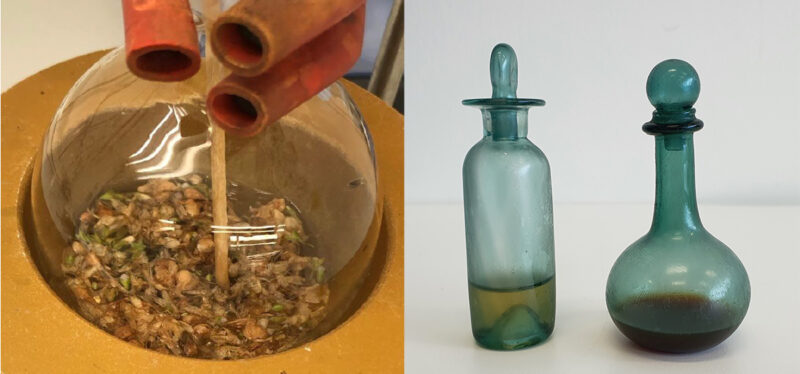Art historian Erin Griffey is a bit of a beauty maven. “I’m one of those people who reads the backs of beauty products,” she says. That’s why, while working on a book about beauty culture in Renaissance Europe, Griffey experienced déjà vu.
She noticed that many ingredients in beauty recipes from the 16th to 18th centuries — compiled from books, cosmetic recipe collections, medical texts, health regimen manuscripts, herbals and pharmacopeias — also appear on modern beauty packaging. For instance, rosewater is used in modern skin-hydrating mists and sulfur is found in some over-the-counter acne creams.

Sign Up For the Latest from Science News
Headlines and summaries of the latest Science News articles, delivered to your inbox
Client key* E-mail Address* Go
Thank you for signing up!
There was a problem signing you up.
Such similarities are clues to what Renaissance-era people used the products for and how the products worked. But they are not the whole story. That’s because the ancient recipes often also list bizarre or even dangerous ingredients, from bile acids and calves’ hooves to lead and the poisonous bryony plant. To get a better understanding, Griffey wanted to re-create the recipes. So she turned to her colleagues at the University of Auckland in New Zealand. Thus the Beautiful Chemistry Project was born.
The team started with what Griffey calls “sticky recipes” because they’re found in many sources throughout the Renaissance period: rosemary flowers in white wine, myrrh powder with egg white, and the velvety covering of newly grown deer antlers with bean flour.
The recipes tend to be vague and varied. So chemist Michel Nieuwoudt and her team experiment with the measurements and procedures while Griffey searches various sources for more clues to ingredient types and ratios.
“We knew we could not re-create it exactly as is,” Griffey says of the recipe for rosemary flowers in white wine. “We do not have access to the rosemary plants that grew 500 years ago or the wines and whatever their chemical makeup was.” But this legwork “enabled us to get closer to an approximation.”
Nieuwoudt and her team boiled rosemary flowers in round-bottom flasks each filled with a different solution: sweet white wine, dry white wine, ethanol in water or aqua vitae. Once the researchers filtered out the flowers and analyzed the resulting mixtures using gas chromatography and mass spectrometry, they found chemical compounds that are common in today’s skin care products, including soothing camphor, eucalyptol and the fragrant alcohol linalool (SN: 7/22/02).
The Renaissance-era recipe stated the potion would “make the face fair.” Nieuwoudt’s findings suggest how: by toning and moisturizing skin.
 A Renaissance-era recipe for a potion to “make the skin fair” calls for boiling rosemary flowers in sweet white wine (left). Chemists re-created the recipe and found that the resulting liquid (right) — shown in the Renaissance-style bottle on the left — contains camphor, eucalyptol and linalool, which suggests the product acts as a hydrating skin toner. The bottle on the right contains the extract from a myrrh concoction.E. Griffey, M. Nieuwoudt
A Renaissance-era recipe for a potion to “make the skin fair” calls for boiling rosemary flowers in sweet white wine (left). Chemists re-created the recipe and found that the resulting liquid (right) — shown in the Renaissance-style bottle on the left — contains camphor, eucalyptol and linalool, which suggests the product acts as a hydrating skin toner. The bottle on the right contains the extract from a myrrh concoction.E. Griffey, M. Nieuwoudt
The team has also made progress on unlocking the secrets of myrrh powder and egg whites. Experiments suggest that myrrh draws out proteins from egg whites and the egg whites extract resins, sugars and volatiles from the myrrh. That results in a serumlike product that has antiseptic and anti-inflammatory properties and probably stimulates collagen growth, Nieuwoudt says. “It seems there’s a synergy between all of these different ingredients, and this is why it works.”
As for what deer velvet and bean flour may have been used for, the researchers are still teasing out results. And they have yet to tackle recipes with dangerous ingredients.
Eventually, the researchers hope to perfect their re-creations and bring the products to drug store shelves — minus, of course, any unsafe ingredients. “I think people will want to go back to something that is natural, and it’s also appealing for people to think they’re using Renaissance products,” Nieuwoudt says. Until then, the beauty for the researchers lies in “digging [the recipes] out and understanding them.”

